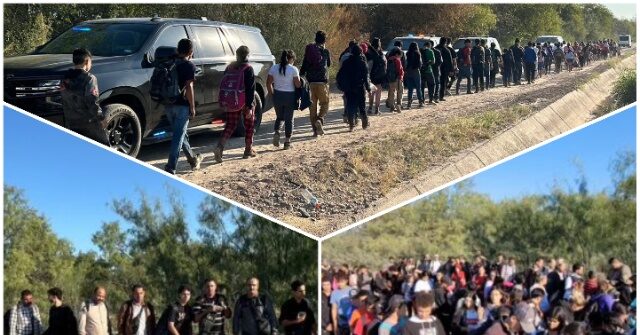In Eagle Pass, Texas, over the recent weekend, a significant increase in migrant crossings was recorded, with more than 500 individuals arriving in large groups. This surge raised alarms, particularly because it included a notable number of Special Interest Aliens (SIAs) who are individuals from nations that could pose a security risk. According to sources within Customs and Border Protection (CBP), the apprehensions included migrants from Iran, Egypt, Afghanistan, and Turkey, highlighting a shift in the demographic profile of those attempting to cross into the United States. Traditionally, SIAs have been primarily apprehended in other border regions such as Arizona or California, but this new trend in Eagle Pass marks an unsettling development for authorities monitoring border security.
Alongside the rise in SIAs, there was also a worrying increase in unaccompanied migrant children. The weekend saw 102 minors apprehended after arriving at the border alone, which constituted about 20 percent of recent group crossings. The CBP source explained that these children are often sent by their families, exacerbating concerns about their welfare and the motivations behind their journeys. The groups crossing included significant numbers of unaccompanied minors, underscoring a shift in the types of migrants attempting to enter the country amid an already challenging border situation.
On Monday, another sizable group of 150 migrants crossed the border, with a mix of nationalities, including Turkish and Egyptian citizens and a number of unaccompanied children. A smaller group of 130 migrants followed on Sunday, also consisting of Afghan nationals and a substantial number of children. The Texas Department of Public Safety confirmed these details through social media posts, providing visual evidence of the unprecedented scale of crossings. As part of the processing protocols, single adult migrants involved in trespassing will face legal repercussions, while families and unaccompanied minors will be transferred to Border Patrol for further processing and care.
Individuals apprehended for public trespassing are expected to be released upon completion of their legal proceedings, as they are then allowed to pursue asylum claims in the United States. Conversely, unaccompanied minors are more directly cared for through the Office of Refugee Resettlement, which facilitates their placement with sponsors in the U.S. The dual nature of these procedures illustrates the complexities faced by authorities when managing migrant flows, especially when vulnerable individuals like children are involved.
The evolving landscape of migrant demographics in Eagle Pass poses not only logistical challenges but also safety concerns and questions about border policy effectiveness. Officials from the CBP have noted that while they have dealt with large groups of migrants before, the emergence of SIAs seeking to cross in this area marks a new and perplexing trend. Authorities are actively pursuing intelligence regarding the motivations driving this shift, indicating a growing focus on national security implications alongside humanitarian considerations.
Statistics reveal that the Del Rio Sector has experienced nearly 250,000 migrant apprehensions, with Eagle Pass accounting for about 80 percent of these incidents. This high rate has prompted critical evaluations of current border operations and the strategies employed by federal and state agencies. With the situation appearing increasingly complex due to the varying demographics of migrants, including those with potential security concerns and the rising number of children, the ongoing challenges at the border remain at the forefront of discussions regarding immigration policy and enforcement strategies in the United States.

